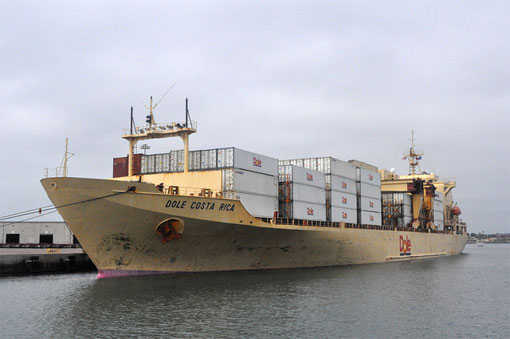If President Laura Chinchilla gets her way, Costa Rica will be among the first countries to join the Asia Pacific Economic Cooperation forum (APEC) since a moratorium on new members was set in 1998. But joining the group is an uphill battle, and the president knows that. Costa Rica is now one of more than a dozen other countries—including India, Panama and Colombia—lobbying to join the club.
In the past month, Costa Rica has continued to expand its free-trade network, inking a free-trade agreement (FTA) with Peru and ratifying an accord with China. Though markets like China and Peru may seem quite different, an alluring connection exists between both: APEC membership.
Costa Rican government officials have expressed an interest in joining the 21-member APEC at least as far back as 2005 and are considering every possible entryway into the group. Beyond Peru and China, a deal has been inked with Singapore and ones could be in the pipeline with South Korea and Japan.
After the Legislative Assembly approved the Costa Rica-China FTA on May 31, Foreign Trade Minister Anabel González applauded the vote and put it into context. “The negotiation over the FTA with China fits into Costa Rica’s strategy to position itself in the Asian continent,” González said. On May 26, after signing the Peru pact, which is pending Costa Rica’s congressional approval, González nodded to APEC as well: “Peru also represents an important ally for our efforts to enter APEC.”
Formed in 1989, APEC is a negotiation forum that eases trade barriers among members. The group includes powerhouse economies like Japan and the United States, as well as commodity-rich Latin heavyweights such as Mexico, Peru and Chile. Members comprise 54 percent of world gross domestic product and about 44 percent of global trade.
Membership could represent a significant boost for the local economy. Costa Rica, with a GDP estimated to reach $40 billion this year, saw its exports to Asia grow in value from under $300 million in 2000 to $1.25 billion in 2010, according to PROCOMER. Imports from Asian grossed $2.2 billion last year. Greater reduction in free trade would certainly increase the flow of two-way trade.
Already, its web of FTAs includes the Dominican Republic-Central America-United States Free Trade Agreement (DR-CAFTA) and bilateral treaties with Panama, Peru, Canada, Chile, the Dominican Republic, China, Singapore and a partial deal with Venezuela. A trade partnership between Central American countries and the European Union is still pending. The result: about 95 percent of Costa Rica’s trade is already tariff-free, according to Alberto Trejos, professor at INCAE Business School in Costa Rica and the country’s former foreign trade minister.
Further, Trejos notes that as Costa Rica makes a name with U.S. firms in outsourcing services, diversifying beyond coffee and bananas, the country should market itself as a platform for Asian businesses. As Asia makes further inroads into the Americas, a local partner in business services will be needed. “If we happen to be the critical partner in that effort, a very small piece of the service needs of Chinese manufacturing is going to be a humongous opportunity for us,” said Trejos.
However, opposition to Costa Rica’s free-trade trailblazing is sparking some uneasiness among local businesses. Officials at the Costa Rica Chamber of Industries have criticized the government for going too far in signing a trade treaty with an “untrusted” partner like China. Some business leaders are urging the Chinchilla administration to halt plans for future FTAs until the country becomes more competitive and learns to better exploit the trade deals already in place.
Despite these concerns, the president is showing no signs of slowing her trade mission. Following in the footsteps of her predecessor, Óscar Arias, the centrist and pragmatic Chinchilla sees easing trade barriers as a way to draw in more commerce and foreign direct investment (FDI).
APEC membership is the key. Costa Rica boasts free trade pacts with about one-third of APEC member economies, but these deals won’t be enough to hand this small, stable nation a free pass to enter. “Economic and trade activity could be our main weapon but also our main problem when being considered alongside economies like India, Colombia and Ecuador that are also competing for spaces in APEC,” according to Jose Vinicio Sandi Meza, an expert on foreign trade and economic policy at Costa Rica’s Grupo de Estudios de Asia Pacífico (GEAP).
He added that Costa Rica has yet to reach out to several important members. “Its relationships with countries such as Indonesia, Malaysia, Thailand, and Vietnam have been very low profile, despite their great economic dynamism in the region.”
Still, Costa Rica is slowly inching its way closer to the club. In May, Costa Rican Foreign Minister René Castro announced that he met with his Chilean counterpart in Santiago and received positive signs in favor of the pending APEC candidacy. Earlier in the year, Costa Rica renewed its guest observer status in place since 2008.
For Sandi Meza, beyond just FTAs Costa Rica needs to walk and talk like APEC, working toward its policies and goals, and then maybe, just maybe, little Costa Rica will one day stand out among the crowd. In the meantime, expect more FTAs with its members.




